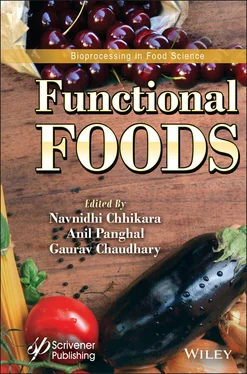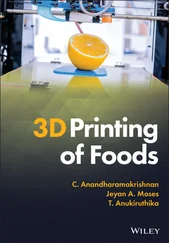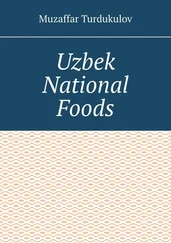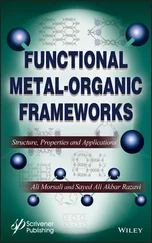The demand and market growth of functional foods is controlled by socio-demographic characteristics, awareness, knowledge of nutritional advantages and health claims, labeling and attitude of consumers. The smart, health conscious consumer is demanding for functional foods for their overall health and wellbeing. In the current scenario, the existing functional foods in market were designed to meet the needs for particular health condition as evident by medical and nutritional experts. Consumers are more familiar to the functional foods and thus the functional foods are now accepted by the group of consumers whose interest is in following healthy food choice and dietary benefits. More research is required to explore the effectiveness of functional food to consumers avoiding medications. Functional foods are based on either plant/animal source or using any active components from these sources. Another concern is about the sustainable sources of functional ingredients, green technologies for extraction of these functional ingredients and advanced technologies for processing and packaging of functional foods. Simultaneously, the safety perspectives, guidelines and advancements in regulations of functional foods are also requisite at global level.
1. Siro, I., Kápolna, E., Kápolna, B., & Lugasi, A. (2008). “Functional food. Product development, marketing and consumer acceptance—A review”. Appetite, 51 (3), 456-467.
2. Shahbandeh, M. (2018). U.S. Functional Foods Market—Statistics & facts . Retrieved from https://doi.org/ https://www.statista
3. Vicentini, A., Liberatore, L., & Mastrocola, D. (2016). “Functional foods: Trends and development of the global market.” Italian Journal of Food Science , 28, 338–351.
4. Küster-Boluda, I., & Vidal-Capilla, I. (2017). Consumer attitudes in the election of functional foods. Spanish Journal of Marketing-ESIC, 21 , 65-79.
5. Kraus, A. (2015). “Factors influencing the decisions to buy and consume functional food”. British Food Journal , 117(6), 1622-1636.
6. Keys A, Anderson JT & Grande F (1965) “Serum cholesterol response to changes in the diet: IV. Particular saturated fatty acids in the diet”. Metabolism 14, 776–786.
7. Kuester, I., & Vila, N. (2017). “Health/Nutrition food claims and low-fat food purchase: Projected personality influence in young consumers”. Journal of functional foods , 38, 66-76.
8. Law, M. (2000). Plant sterol and stanol margarines and health. Bmj, 320 (7238), 861-864.
9. Gur, J., Mawuntu, M., & Martirosyan, D. (2018). FFC’s “Advancement of Functional Food Definition”. Functional Foods in Health and Disease , 8(7), 385-297.
10. Martirosyan, D. M., & Singh, J. (2015). “A new definition of functional food by FFC: what makes a new definition unique?”. Functional foods in health and disease , 5 (6), 209-223.
11. Shimizu, M. (2019). “History and current status of functional food regulations in Japan. In Nutraceutical and functional food regulations in the United States and around the world” (pp. 337-344). Academic Press.
12. Bagchi, D. (Ed.). (2019). “Nutraceutical and functional food regulations in the United States and around the world”. Academic press.
13. Panghal, A., Janghu, S., Virkar, K., Gat, Y., Kumar, V., & Chhikara, N. (2018). “Potential non-dairy probiotic products–A healthy approach”. Food bioscience , 21 , 80-89.
14. Syngai, G. G., Gopi, R., Bharali, R., Dey, S., Lakshmanan, G. A., & Ahmed, G. (2016). “Probiotics-the versatile functional food ingredients”. Journal of food science and technology , 53(2), 921-933.
15. Castro-Bravo, N., Wells, J. M., Margolles, A., & Ruas-Madiedo, P. (2018). “Interactions of surface exopolysaccharides from Bifidobacterium and Lactobacillus within the intestinal environment”. Frontiers in Microbiology, 9 , 2426.
16. Panghal, A., Virkar, K., Kumar, V., Dhull, S. B., Gat, Y., & Chhikara, N. (2017). “Development of probiotic beetroot drink”. Current Research in Nutrition and Food Science Journal, 5 (3).
17. Hasler, C. M. (2002). “Functional foods: benefits, concerns and challenges— a position paper from the American Council on Science and Health”. The Journal of Nutrition, 132 (12), 3772-3781.
18. Helkar, P. B., Sahoo, A. K., & Patil, N. J. (2016). “Review: Food industry by-products used as a functional food ingredients”. International Journal of Waste Resources , 6(3), 1-6.
19. Kaur, S., & Das, M. (2011). “Functional foods: an overview”. Food Science and Biotechnology, 20 (4), 861.
20. García-Burgos, M., Moreno-Fernández, J., Alférez, M. J., Díaz-Castro, J., & López-Aliaga, I. (2020). “New perspectives in fermented dairy products and their health relevance”. Journal of Functional Foods, 72 , 104059.
21. Market Analysis Report by Grand View Research Market Report, 2018). Report ID: GVR-1-68038-195-5. “Functional Foods Market Size, Share & Trends Analysis”. Report By Ingredient (Carotenoids, Prebiotics & Probiotics, Fatty Acids, Dietary Fibers), By Product, By Application, And Segment Forecasts, 2019 – 2025.
22. Panghal, A., Khatkar, B. S., & Singh, U. (2006). “Cereal proteins and their role in food industry”. Indian Food Industry , 25 (5), 58.
23. Khatkar, B. S., Panghal, A., & Singh, U. (2009). “Applications of cereal starches in food processing”. Indian Food Industry, 28 (2), 37-44
24. Chhikara, N., Abdulahi, B., Munezero, C., Kaur, R., Singh, G., & Panghal, A. (2019). “Exploring the nutritional and phytochemical potential of sorghum in food processing for food security”. Nutrition & Food Science .
25. Sidhu, J. S., Kabir, Y., & Huffman, F. G. (2007). “Functional foods from cereal grains”. International Journal of Food Properties , 10 (2), 231-244.
26. Nardi, S., Calcagno, C., Zunin, P., DEgidio, M.G., Cecchini, C., Boggia, R. and Evangelisti, F. 2003. Nutritional Benefits of Developing Cereals for Functional Foods. Cereal Research Communications , 31(3–4): 445–452.
27. McNabney, S. M., & Henagan, T. M. (2017). Short chain fatty acids in the colon and peripheral tissues: a focus on butyrate, colon cancer, obesity and insulin resistance. Nutrients , 9 (12), 1348.
28. Lockyer, S., & Nugent, A. P. (2017). Health effects of resistant starch. Nutrition bulletin, 42 (1), 10-41.
29. Lopez HW, Levrat-Verny MA, Coudray C, Besson C, Krespine V, Messager A, et al . Class 2 resistant starches lower plasma and liver lipids and improve mineral retention in rats. J Nutr , 2001;131:1283–9.
30. Kotecka-Majchrzak, K., Sumara, A., Fornal, E., & Montowska, M. (2020). Oilseed proteins–properties and application as a food ingredient. Trends in Food Science & Technology .
31. Hidalgo, F. J., & Zamora, R. (2006). Peptides and proteins in edible oils: Stability, allergenicity, and new processing trends. Trends in Food Science & Technology , 17, 56–63. https://doi.org/10.1016/j.tifs.2005.10.006
32. Li-Chan, E. C. (2015). Bioactive peptides and protein hydrolysates: research trends and challenges for application as nutraceuticals and functional food ingredients. Current Opinion in Food Science , 1, 28-37.
33. Siri-Tarino, P. W., Chiu, S., Bergeron, N., & Krauss, R. M. (2015). Saturated fats versus polyunsaturated fats versus carbohydrates for cardiovascular disease prevention and treatment. Annual review of nutrition, 35 , 517-543.
34. Chatterjee, R., Dey, T.K., Ghosh, M. and Dhar, P. (2015). Enzymatic modification of sesame seed protein, sourced from waste resource for nutraceutical application Food and Bioproducts Processing 94: 70–81.
Читать дальше










